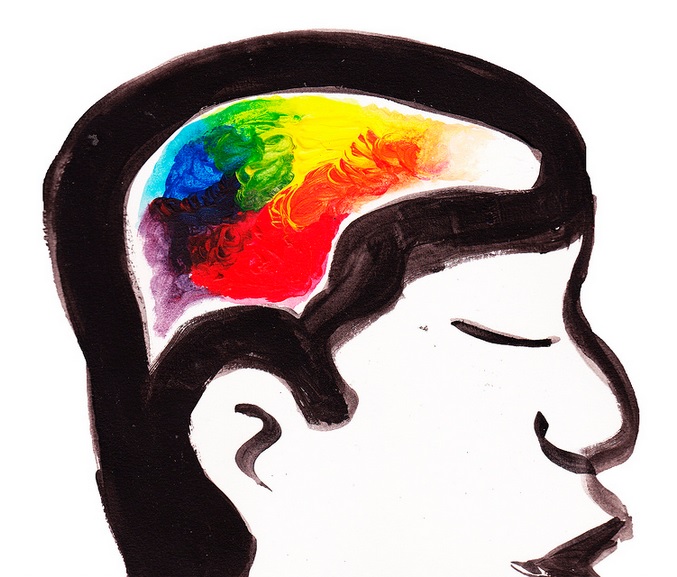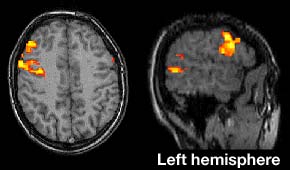In the blockbuster, Minority Report, Tom Cruise walks through a shopping mall, only to be harassed by talking advertisements that identify and talk to him.  It's not just that the technology recognizes our hero, but due to information that has accumulated about his buying habits, they talk to him directly; they seem to know his innermost desires.
It's not just that the technology recognizes our hero, but due to information that has accumulated about his buying habits, they talk to him directly; they seem to know his innermost desires.
Progress in a technique called functional magnetic resonance imaging (fMRI) is allowing us to see thoughts as they occur within the human brain. How?
First, imagine a pool, the water fantastically still. A dog appears from the eaves and leaps into the water. Now, imagine that's the water in your brain. Thanks to a powerful magnet, the water molecules are all facing exactly the same way, calm. The dog is a thought you are just about to have and where it hits the water is exactly where you have that thought.
Splash! Your thought causes that area of your brain to demand more oxygen and more blood. As the blood arrives, it provides us with a visible indication of those parts of the brain responsible for producing the 'thought'.
 |  |
| Frightening stimuli activate the brain's 'fear centres' | Experiencing a smell activates the parts of the brain involved in olfactory recognition and interpretation. |
 | |
| Some specific tasks are handled in discrete regions of the brain, on one side only. In this fMRI image the yellow/red 'hotspots' indicate the active brain regions. | |
The significance of this information is immense. Besides providing a greater understanding of how certain diseases affect the brain, it will allow us to see what happens in your brain when you think of an old friend, drink milk or feel anger. And by recording the patterns of activity when someone is thinking truthfully, or hiding a lie, this technology could provide us with a way of telling the difference. Collect enough data and, eventually, you wouldn't even need to ask someone what they're thinking; you could just study their scan.
And it could work both ways. Imagine a company with a new product. They want you to need this product. Their researchers have found that the sensation of 'need' lights up a specific region of the brain. By using a precise combination of sound and images in their new advert, could they cause that region of your brain to light up, to elicit the sensation of needing? Far fetched, perhaps, but not impossible.
So, if you find yourself sitting in the driving seat of a new car before you remember that you can't drive, or buying a Phil Collins box-set, or some other inexplicable or equally improbable behaviour, you might want to start watching less television, and dust off your old copy of Nineteen Eighty Four.
ACKNOWLEDGEMENTS All images courtesy of Dr Mark Lythgoe, a Neurophysiologist and lecturer in Radiology and Physics at the Institute of Child Health and Great Ormond Street Hospital (www.mlythgoe.com), except 'Ssshh!', courtesy of Dr Barry Gibb.
References
- Previous Why Plants Make Caffeine
- Next The CytoMatrix: Reloaded










Comments
Add a comment